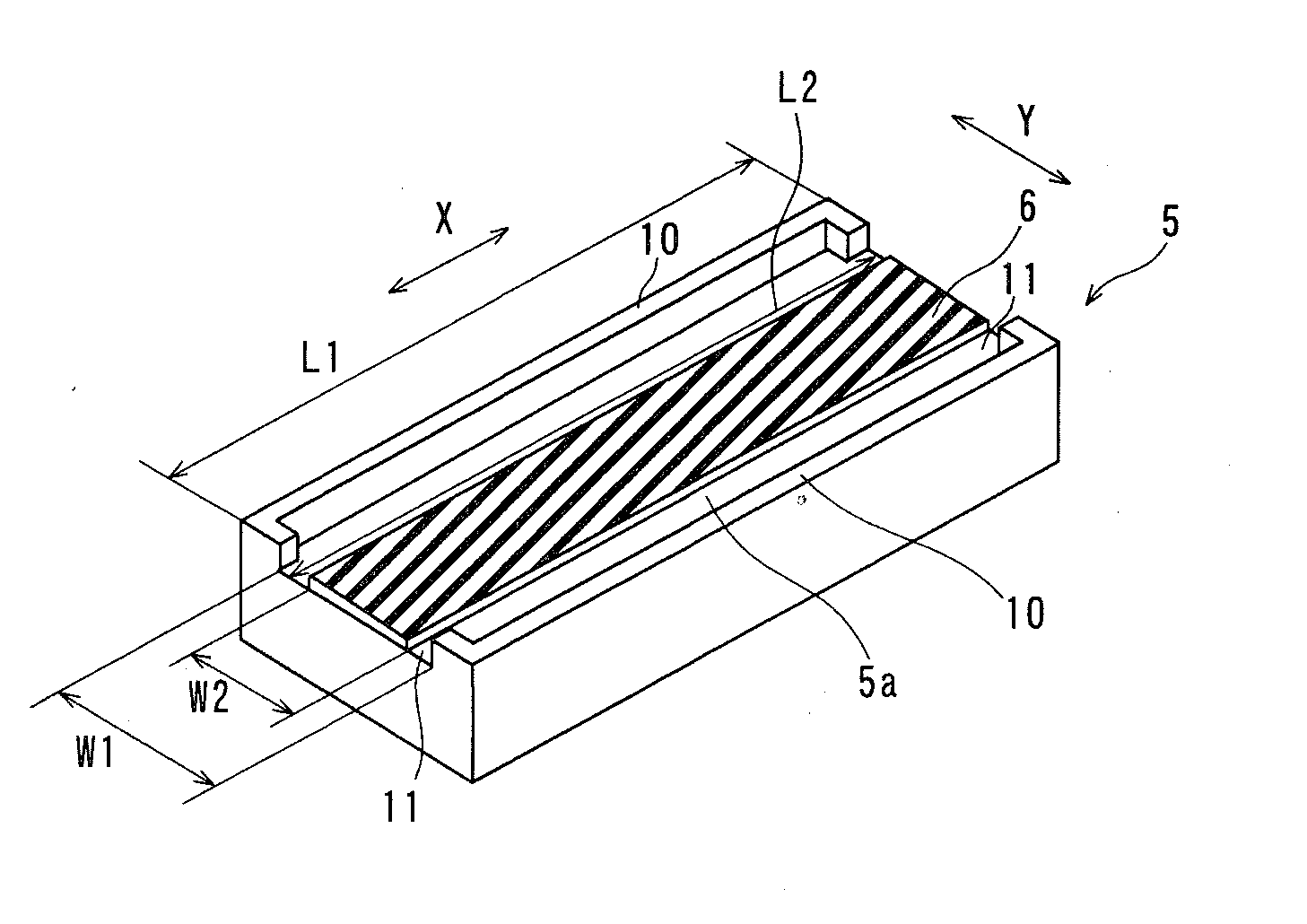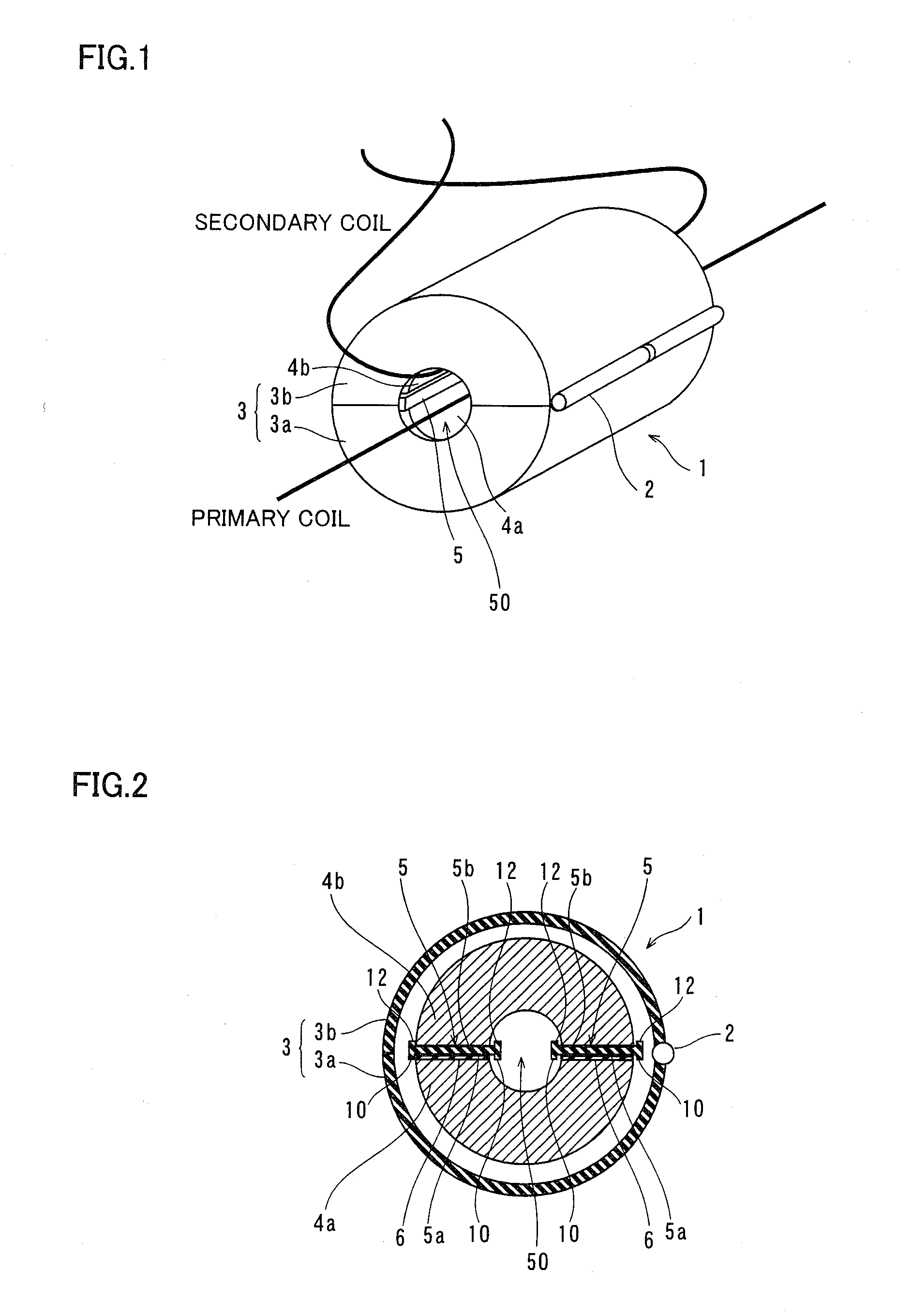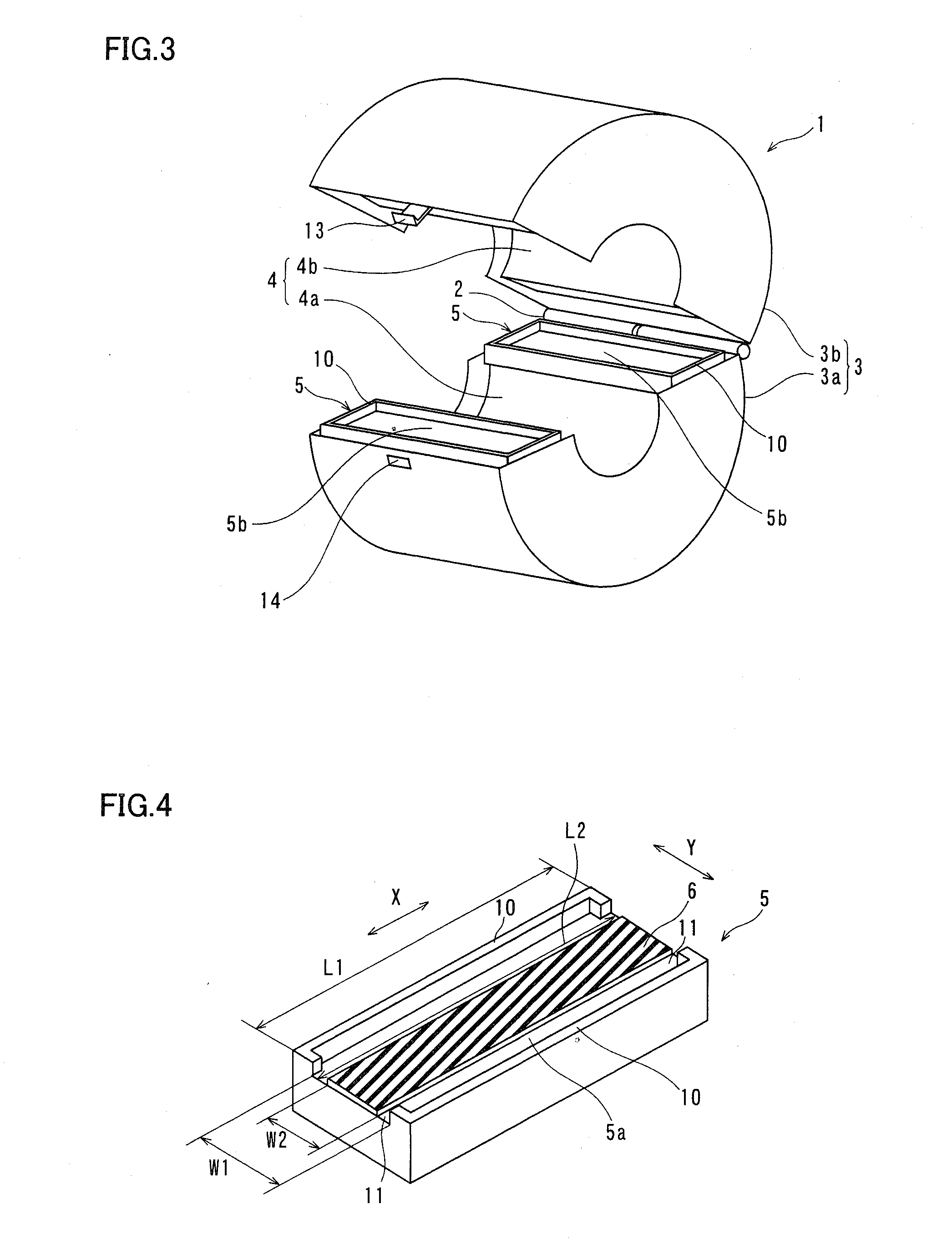Transformer core and its manufacturing method
a transformer core and manufacturing method technology, applied in the direction of transformer/inductance magnetic cores, transformer/yokes, inductances, etc., can solve the problems of difficult to remarkably expand the magnetic gap, the operation of applying or injecting pasty adhesives to or into the space, and the inductance of a transformer core may vary remarkably, so as to achieve the effect of reducing the number of drops
- Summary
- Abstract
- Description
- Claims
- Application Information
AI Technical Summary
Benefits of technology
Problems solved by technology
Method used
Image
Examples
first embodiment
[0044]First, the structure of a transformer core 1 according to a first embodiment is described with reference to FIGS. 1 to 6.
[0045]According to the first embodiment, the transformer core 1 is constituted of a clamp mechanism 2, a core case 3, a soft ferrite core 4, spacers 5 and sheet-shaped adhesive layers 6 formed by double-faced adhesive tapes substantially unchanging in thickness, as shown in FIGS. 1 to 3.
[0046]More specifically, the core case 3 is formed by a pair of a first core case 3a and a second core case 3b having semicircular outer peripheral surfaces, and the first core case 3a and the second core case 3b are coupled with each other through the clamp mechanism 2. As shown in FIG. 3, the first core case 3a has a pawl 13, while the second core case 3b has an engaging hole 14 engageable with the pawl 13 of the first core case 3a. With this pawl 13 and the engaging hole 14, the first core case 3a and the second core case 3b are so formed as to keep a closed state in a sta...
second embodiment
[0068]Referring to FIGS. 9 to 11, this second embodiment is described with reference to a case of employing a spacer provided with regions not provided with convex portions on parts of the respective ones of a pair of opposing sides of convex portions of a first surface and the remaining pair of opposing sides, dissimilarly to the aforementioned first embodiment.
[0069]According to this embodiment, convex portions 21 are integrally provided on four sides of a first surface 20a of a spacer 20, as shown in FIGS. 9 and 11. Further, regions 22 and 23 not provided with the convex portions 21 are provided on a pair of opposing sides and the remaining pair of opposing sides respectively, and the convex portions 21 are formed on the four corners of the first surface 20a of the spacer 20. The convex portions 21 are examples of the “first convex portions” in the present invention.
[0070]On four sides of a second surface 20b of the spacer 20, convex portions 24 are integrally provided on all reg...
PUM
| Property | Measurement | Unit |
|---|---|---|
| magnetic gap | aaaaa | aaaaa |
| width | aaaaa | aaaaa |
| magnetic | aaaaa | aaaaa |
Abstract
Description
Claims
Application Information
 Login to View More
Login to View More - R&D
- Intellectual Property
- Life Sciences
- Materials
- Tech Scout
- Unparalleled Data Quality
- Higher Quality Content
- 60% Fewer Hallucinations
Browse by: Latest US Patents, China's latest patents, Technical Efficacy Thesaurus, Application Domain, Technology Topic, Popular Technical Reports.
© 2025 PatSnap. All rights reserved.Legal|Privacy policy|Modern Slavery Act Transparency Statement|Sitemap|About US| Contact US: help@patsnap.com



